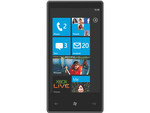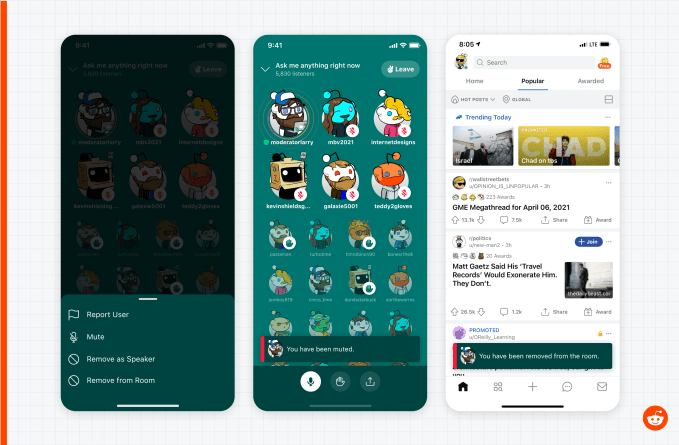POCO X3 Pro review - Android
The POCO X3 Pro, announced in March 2021, is a modestly priced unlocked phone that provides users with a suite of mid-range hardware. On paper it offers a more robust suite of specifications than what others do in the price point.
How does the handset fare in our testing? Is it worth taking a gamble on a less-familiar brand for those living in the US? Where does one even find the phone should they want one? Read on to learn more about the Xiaomi POCO X3 Pro.
Key Specifications
- 6.67-inch LCD display with 120Hz refresh rate
- Qualcomm Snapdragon 860 processor
- 6GB RAM/8GB RAM
- 128GB/256GB UFS3.1 storage
- 48-megapixel, 8-megapixel ultra-wide, 2-megapixel macro, 2-megapixel depth sensor
- 20-megapixel front-facing camera
- 5160mAh battery with fast charging
- Android 11-based MIUI 12
What is it like to use the POCO X3 Pro?
One look at the hardware tells us that the phone should have no issues with running your typical day-to-day apps and games. Its hardware specifications generally put it on par with early 2020’s flagship phones.

In practice, we find the POCO X3 Pro to be a solid device that quickly hops about, keeping apps open and never showing any signs of struggle. There’s more under the hood than what many people need and we suspect that to be the case even a year from now.
The X3 Pro is the first phone to feature a Qualcomm Snapdragon 860 processor. As more of a punched-up version of the Snapdragon 855, it’s both more powerful and less expensive than what other chips run. Along those lines, this means 4G connectivity instead of 5G. And that also means a lower price.
Gamers will appreciate the Adreno 640 GPU which is typically only found in upper-end devices. It’s one of those low-power/high-performance components that helps make games more enjoyable. If you like to play games or run an emulator for older consoles, you’ll find the phone does well.
The X3 Pro is a dense, if not heavy, phone. That should be expected though when you have a screen as big as this. Spend some time with it and you’ll find it always makes its presence felt. Those with smaller hands or which are tend to easily fatigue may wish to look elsewhere as it’s just a smidge taller and wider than most phones.

With that said, we do like the screen for what it does present. The 120Hz IPS LCD full HD panel is easy to see from all angles and does get bright enough to see in broad daylight. Gaming looks good with the high refresh rate and we always dig smooth scrolling and animations.
We’ve come to appreciate AMOLED panels for their black and high contrast ratio and aren’t crazy about an LCD screen. But with that said we’ve seen plenty worse from other phones. And again, it means a cheaper price tag.
Considering the price of the phone we were pleasantly surprised with the camera experience of the POCO X3 Pro. It’s a nice mix of standard, macro, and ultra-wide with none of them really outshining the other. With that said, none of them really drag the experience down or feel unworthy of inclusion. As we’re coming to learn, we now live in a world where respectable three and four-cameras should be expected even at lower price points.
Generally speaking, the camera experience was on par with expectations, if not a little better. You’ll want to spend some time getting to know all of the features and shooting modes a bit before really getting out there and using it in real time. There’s quite a few cameras and modes to master and the app isn’t super intuitive.
As for actual results, we found the X3 Pro did well in the area of “open the app and snap a picture.” Playing with macro, tilt shift, and filters were hit and miss but we think we could come to better appreciate them in time.
Colors were mostly accurate and balanced and we found it took very little editing to make images pop for social media. Shutter speeds were decent, even on the 48-megapixel stuff, but we didn’t really see anything stellar by leaving that mode on.

How’s the software on the POCO X3 Pro?
The phone runs an Android 11-based version of Xiaomi’s custom MIUI — version 12 to be precise. It’s colorful and inviting and seems to have a pretty consistent feel to it, and there’s plenty of customization available.
Users can choose between basic stuff like dark/light mode, font sizes, and wallpapers; however, they can also do full themes with icons, colors, and backgrounds. It’s easy to navigate through the options, selecting things and adjusting them to taste. You can make your phone feel as you’d like.
Despite being sold direct to consumer as an unlocked phone, the X3 Pro comes with a surprising number of extra apps. Our review unit had LinkedIn, Amazon, PUBG Mobile, Facebook, Netflix, and a handful of Mi titles. There’s some overlap between web browsing, file management, photo gallery, and a couple of others.
As far as removing the unwanted things is concerned, you can uninstall most of them. The Mi-branded stuff can be disabled from startup but they’re not going anywhere.
What else can you tell us about the POCO X3 Pro?
We really liked the battery experience that comes with the phone. For starters, the 5,160mAh capacity is on the higher end of things and routinely provides us with more than one day’s worth of usage. And when it comes time to charge, its 33W charger is pretty damn fast, often topping off with less than an hour on the wall.

The POCO X3 Pro also includes a headphone jack, something that we’re always happy to have around. It can be debated whether or not they’re necessary, but when it’s included, we’re pleased.
Another incredibly useful, albeit not necessary, feature that’s found in Xiaomi devices is present here. This is, of course, the IR blaster which can be used for controlling devices like TVs and other gadgets which might use infrared. You can configure the settings from the Mi Remote app.
Surely there are drawbacks, right?
As great as the phone is, it’s not without its flaws or shortcomings. Remember that heft we mentioned earlier? Indeed, extended time with this phone only serves to remind us how big and bulky it felt.
Stack it up to the OnePlus 8 Pro or another “large” device and you’ll see that it does have a bit of extra width and height. Moreover, it’s a little thicker, too. None of these metrics are terrible or overwhelming, but taken as a whole, they do make the X3 Pro feel big.
Save for the hologram-like flourish of the phone’s branding down the spine, the general design of the phone is a little tired or uninspired. Its greyish blue color doesn’t attract the eye or stand out but we don’t expect flash or glitz at this price.
We’re now getting to a point where users can look at 5G as a selling feature. Networks are expanding and coverage continues to improve. Is it necessary for anyone? Hardly. But, if you’re looking for the lightning fast 5G stuff, it’s not here.
Taking things a step further, US buyers will really want to look closely at the supported bands to make sure it works with their wireless provider. Ask a sales rep or customer service agent what you might expect in terms of coverage.
Conclusion
In terms of performance, the X3 Pro is as good as anything we’ve tested in this price range, if not better. Features like 120Hz refresh rates and 48-megapixel quad-cameras are only becoming more common because of brands like this who are willing to go the extra mile with specs.
The unlocked phone space is one where you’ll likely end up pleasantly surprised by how far your money goes. Sure, there are the occasional stinkers, but it’s this sub-$300 market that provides a considerable amount of phone for users. The POCO X3 Pro easily stacks up against others in this crowded space.

Do you think it’s a coincidence that Samsung has gotten increasingly more involved with its Galaxy A line over the last couple of generations? No, this is where we find great value propositions. And while we’re talking about Samsung, the X3 Pro stacks up quite nicely against the Galaxy A71.
The POCO brand is only a few years old, but we feel like there’s a lot of potential in it. As an independent brand from Xiaomi we’re seeing a company that gives you more bang for your buck.
The POCO X3 Pro is a terrific well-rounded 4G handset that’s priced to sell. You’d be looking at around $230-$300 USD (6GB/128GB and 8GB/256GB) if you were to purchase one; however, that’s pretty tough to do if you live in the US.
The phone might not win any design awards but it’s more than capable on the hardware front. The screen is a large one and the high refresh and touch sampling rates make gaming and scrolling more enjoyable.
There’s a generous amount of (expandable) storage, a capacious battery, and an intuitive software experience. Toss in a couple of decent cameras and you’re hard-pressed to demand more.
It’s very easy for us to recommend this phone, just not for those living in the US. The only place we find linked to purchase it is through AliExpress and it won’t ship to the US. With that said, GearBest, BangGood, and other outlets are expected to carry the phone.
Understanding that our audience is not strictly based in the United States, we do see it appears much easier to order for other markets.
19/04/2021 10:00 PM
Xbox Cloud Gaming beta arrives on iOS and Windows PCs
19/04/2021 04:44 PM
TextNow Buyer’s Guide
19/04/2021 05:00 PM
Reddit unveils its Clubhouse clone, Reddit Talk
19/04/2021 05:06 PM
Discord softens its iOS NSFW server ban
19/04/2021 05:20 PM
Fitbit's new fitness tracker is all about your fit
19/04/2021 06:19 PM
This is what Samsung's next affordable tablet will look like
19/04/2021 11:17 AM
OnePlus Watch review - I don't have time for this
19/04/2021 02:45 PM
- Comics
- HEALTH
- Libraries & Demo
- Sports Games
- Racing
- Cards & Casino
- Media & Video
- Photography
- Transportation
- Arcade & Action
- Brain & Puzzle
- Social
- Communication
- Casual
- Personalization
- Tools
- Medical
- Weather
- Shopping
- Health & Fitness
- Productivity
- Books & Reference
- Finance
- Entertainment
- Business
- Sports
- Music & Audio
- News & Magazines
- Education
- Lifestyle
- Travel & Local

























